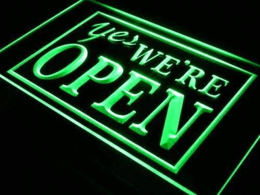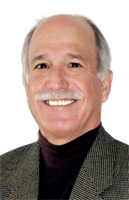
As restaurants, shops, and bars light up their “Open” signs, there’s one question that everyone from employee to customer will be asking: Is it safe to come in?
Outside heavy industry, safety training typically stops at fire drills and job-specific items such as arresting grease fires in the kitchen. Customers don’t choose between Wal-Mart, Costco, or Target based on their safety profile.
Until now.
In the Covid-19 era, leaders from Silicon Valley tech campuses to Billy Bob’s BBQ are challenged to establish virus safety as the new norm of the workplace. Failure to do so will shut you down quickly, and more importantly, could cost someone their life.
Implementing CDC guidelines is only step one. Until virus safety is woven into the culture and evident in everyone’s behavior, your business, people, and customers are at risk. This piece uses best practices from an industry where safety has been core to the culture for decades to help readers understand what it will take to do likewise in your post Covid-19 workplace.
From Hollywood to Houston
In the mid-Seventies, I left my academic position at USC for a management position inside Exxon. My goal was to apply the organization behavior and strategy theories I taught to real-world problems. It was time for this dog to eat his own dog food.
As a mildly reformed hippy and pescatarian, I expected serious culture shock moving from Hollywood to Houston. What I didn’t see coming was Exxon’s safety culture.
- Week One: They gave me a card key and a hard hat and safety goggles…for a management job?
- Week Two: Every meeting from top management to field toolbox meetings started with safety
- Week Three: You couldn’t walk more than 100 feet without seeing another safety sign.
- Week Four: At home, I received a manual from Exxon telling me how to stay safe in the garage, on a ladder, when bending, etc…I didn’t know my home was a war zone!
- Week Four: My boss asked if I had any accidents at home in my first month of work.
- Week Five: My first meeting with serious Exxon big shots started with a half-hour review of on and off the job injuries & remediation plans.
With little industrial experience other than a summer job, I’d have to have been blind, deaf, and quite dumb to not get the message: Safety was a big deal.
The kicker came between beers and chewing tobacco spits as a seasoned supervisor described the 1970 explosion at Exxon’s Linden, N.J. refinery. In his words, the blast nearly wiped northern New Jersey off the map. Luckily no one was killed. The disaster caused Exxon to seriously expand their commitment to safety.
To this day, when my wife leaves dish towels on the bottom stair as a signal to carry them up to our washing machine, I shove them far to the side so no one slips on them.
Creating a Safety Culture for Covid-19
An easy definition of culture is “how we work around here.” Easy as that is, it doesn’t tell you much about how to re-shape your culture. To do that, there are four levers worth pulling. For brevity, I’ll highlight each and link it to my Exxon experience
- Leadership – Starting every meeting with safety quickly conveyed Exxon management’s consistent focus. A simple structure that modeled leaders’ commitment every day.
- Organization and People – Every Exxon plant and office had a safety committee across functions and levels, with budget, to engage and reinforce the safety message and practices.
- Process and technology – Safety impact was a key success criteria before adopting any new process or technology. In the Covid-19 case, an analog could be making frequent handwashing and sanitizing a part of the daily routine. It’s the bathroom cleaning log approach applied to everyone.
- Metrics – Every incident, on and off the job, was tracked, examined, and remedial steps defined.
The last item bears special mention. Covid-19 is exceptionally contagious and often asymptomatic. While it might get to the edge of creepy at first glance, how your folks conduct themselves off the job will impact Covid-19 infections brought into the workplace. No, you can’t dictate what folks do on their own time, but it’s totally within reason to educate them on the implications of keeping the consequences outside the workplace.
Safety is a Uniter; Not a Divider
In 1987, Paul O’Neill (George W. Bush’s first treasury secretary) was brought into Alcoa Corporation as their new CEO. He followed a series of missteps that sapped customers and profits.
At his first meeting with industry analysts, O’Neil, was grilled on his turnaround plan. O’Neill declared that while Alcoa’s safety record was better than many American companies, it was not good enough. He pledged to make Alcoa the safest place to work in the United States.
Analysts looking for increased sales and profit strategies didn’t react well. After a couple of more questions on inventory and capital ratios, O’Neill berated the analysts:
I’m not certain you heard me. If you want to understand how Alcoa is doing, you need to look at our workplace safety figures. If we bring our injury rates down, it won’t be because of cheerleading or the nonsense you sometimes hear from other CEOs. It will be because the individuals at this company have agreed to become part of something important: They’ve devoted themselves to creating a habit of excellence.
Analysts left the meeting distraught. One later said:
The board put a crazy hippie in charge and he’s going to kill the company. I ordered my clients to sell their stock immediately, before everyone else in the room started calling their clients and telling them the same thing. It was literally the worst piece of advice I gave in my entire career.
Had he and his clients bought Alcoa stock that day and held it until O’Neill’s retirement in 2000, they would have seen net income increase five times while Alcoa’s market grew by $27 billion.
Using Safety to Align and Accelerate Change
What O’Neill demonstrated at Alcoa, and I saw at Exxon, is that safety touches everyone. Unlike sales quotas or production goals, safety gets everyone operating to a common improvement goal where rank rarely matters. Safety also embodies caring whereas most business goals are grounded in dollars.
Put yourself in the shoes of your favorite restaurant owner trying to re-open. Every customer will be watching server and kitchen practices as they test “is it safe here?” Staff will be watching how customers comply with new practices and be understandably ansy when they have to confront non-compliance.
The good news is we are in this together: customers, employees, and suppliers. No one wants to pass on Covid-19 no matter how cooped up they’ve been. But don’t mistake the most visible new habits such as masks and social distancing as the finish line.
Creating a safe Covid-19 culture requires putting time into defining and pulling the four levers described. How well you do that will define how fast, effective, safe, and profitable, your opening up becomes.
Or be like Paul O’Neill and consider that crafting Covid-19 safety might be as enlightening as it is necessary.

 I'm Christopher Meyer - author of Fast Cycle Time, Relentless Growth and several Harvard Business Review articles.
I'm Christopher Meyer - author of Fast Cycle Time, Relentless Growth and several Harvard Business Review articles. 